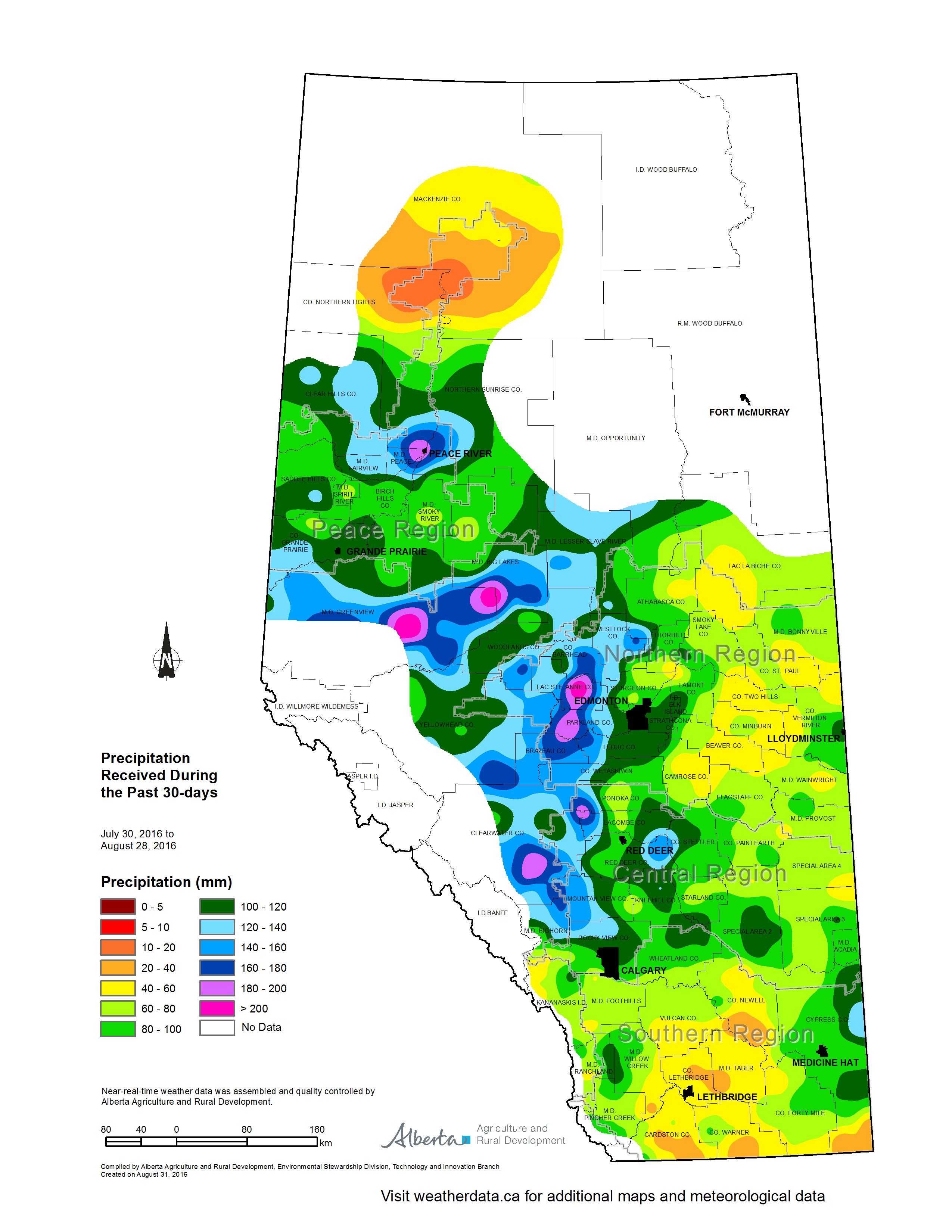| |
Agricultural Adaptation Strategies in Alberta | |
| |
|
|
| |
|
|
| | Farmers in Alberta have a long history of innovating and adapting to multiple challenges of a changing world. Continued focus on “climate smart” strategies that increase productivity and lower emission will help you manage climate changes.
.
Gradual changes in climate conditions allows you time to fine tune adaptation approaches on your farm. Dealing with rapid change in extreme events is much more challenging. Lessons learned from managing both types of change can you help develop a range of approaches to bounce back from the impacts of possible future scenarios.
Adaptation Principles
- Anticipate Risks – which can be prevented, which can be reduced?
- Plan to Manage Risks – a range of strategies can help you deal with different possibilities
- Be Prepared – monitor for critical thresholds
- Evaluate – apply what’s been successful
- Evolve – develop approaches as new information becomes available
Long Term Strategies
Examples of management to increase efficiency and resilience:
- Adopt conservation cropping practices like reduced tillage and continuous cropping to reduce fuel use and enhance water infiltration and nutrient cycling.
- Diversify crops and rotations to include perennial forage to break disease and pest cycles, make effective use of soil nutrients at depth and provide protective soil cover that can trap snow.
- Ensure high quality of water sources.
- Restore and preserve wetlands to improve water infiltration and recharge watersheds. Additional benefits include more types of wildlife habitat and increased soil carbon sequestration.
- Increase efficiencies over all aspects of farm management, from soil testing to increase nutrient use efficiency to identifying extra labour resources to call in when time is short for seeding or harvesting.
- Stabilize farm income using the wide range of crop insurance products available.
- Monitor weather conditions, crop diseases and pests so early action can be taken when threats are more manageable.

Maps of rainfall during the past 30 days are one example of up-to-date weather and climate data from over 350 meteorological stations provided by the Alberta Climate Information Service (ACIS),
If Conditions are Drier than Usual
Producers might:
- Expect concerns with lower than usual seed germination and/or plant growth, lack of feed, shortage of water.
- Conduct small area tests on new crop types that take advantage of drought tolerance.
- Put animals on a rotational grazing program to allow grazing land to rest and recover.
If Conditions are Wetter than Usual
Producers might:
- Face water access issues or water-logging that hinders plant growth.
- Need to arrange for extra labour when timelines narrow.
- Examine potential to reduce flooding impacts from extreme events such as enlarging restricted flood plain areas to avoid hazards.
For More Information
Alberta's Drought and Excess Moisture Risk Management Plan describes how Preparedness, Monitoring and Reporting, and Response can be applied in a range of moisture levels.
Resources for Alberta Producers During Dry Conditions provides information and tools for farm management during dry conditions.
Flood Information including guidelines for preparedness and recovery.
Moving Toward Prairie Agriculture 2050 outlines perspectives from 23 experts with insights into a range of topics related to possible future prairie agricultural systems.
Alberta Climate Change Adaptation Framework Manual was developed to help organizations anticipate and prepare for the impacts of climate change in a comprehensive and consistent manner.
Alberta Climate Change Office, is monitoring work currently underway to assess potential impacts, risks, challenges and opportunities that may result from a changing climate. |
|
| |
|
|
| |
For more information about the content of this document, contact Sheilah Nolan.
This document is maintained by Laura Thygesen.
This information published to the web on March 27, 2017.
Last Reviewed/Revised on July 18, 2018.
|
|